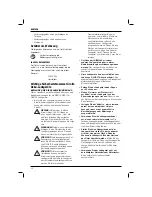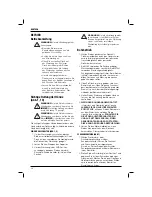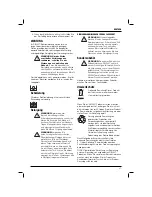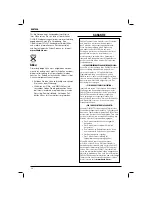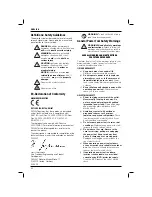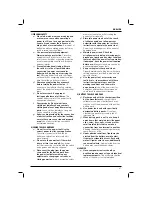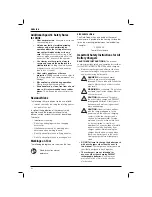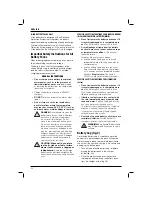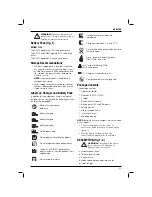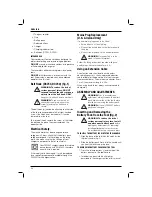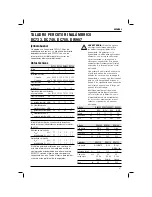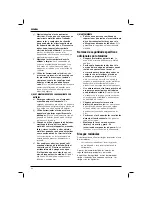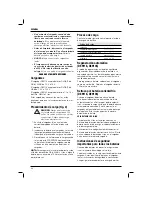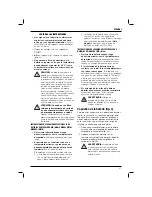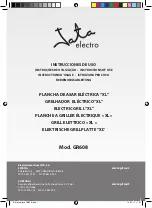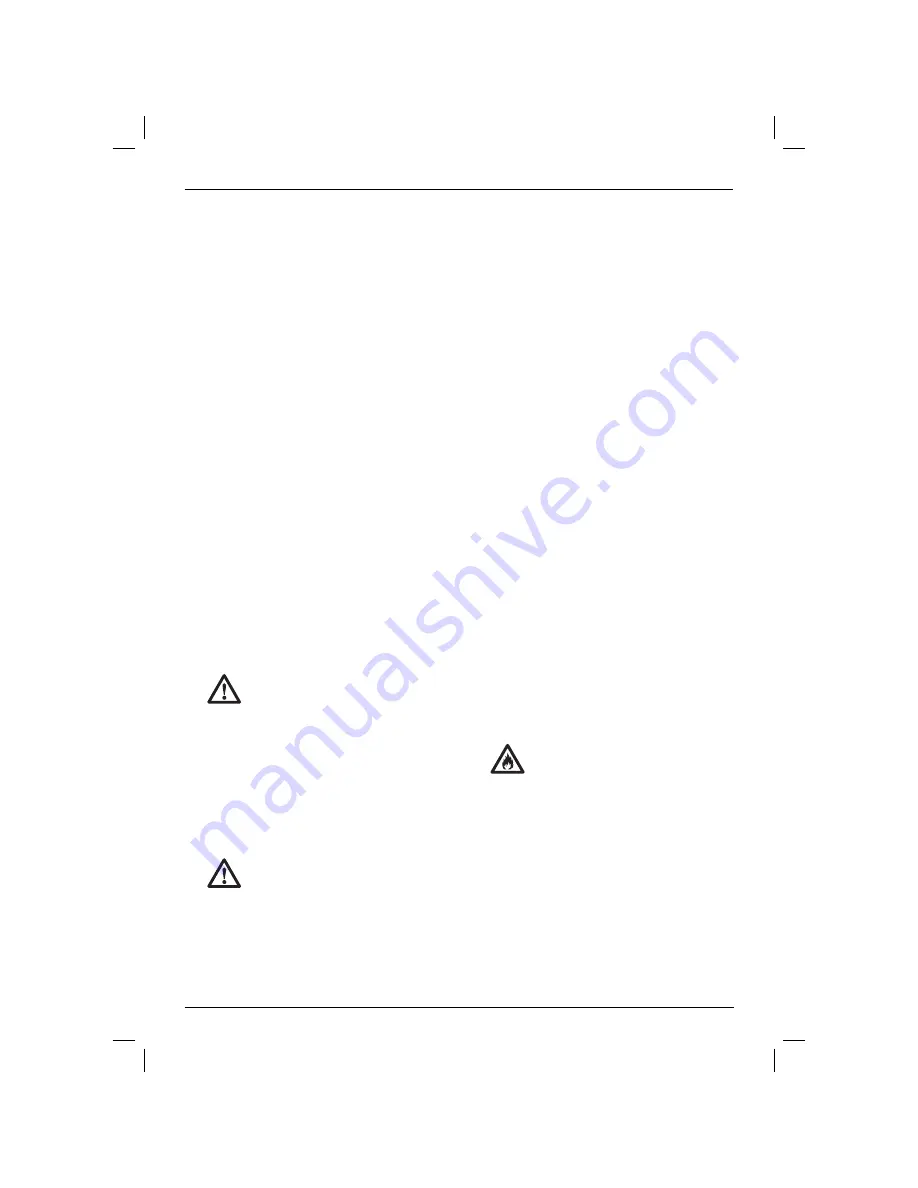
ENGLISH
34
LI-ION BATTERY PACKS ONLY
Li-Ion batteries are designed with an Electronic
Protection System that will protect the battery
against overloading, overheating or deep discharge.
The tool will automatically turn off if the Electronic
Protection System engages. If this occurs, place the
Li-Ion battery on the charger until it is fully charged.
Important Safety Instructions for All
Battery Packs
When ordering replacement battery packs, be sure
to include catalog number and voltage.
The battery pack is not fully charged out of the
carton. Before using the battery pack and charger,
read the safety instructions below. Then follow
charging procedures outlined.
READ ALL INSTRUCTIONS
• Do not charge or use battery in explosive
atmospheres, such as in the presence of
flammable liquids, gases or dust.
Inserting
or removing the battery from the charger may
ignite the dust or fumes.
• Charge the battery packs only in D
E
WALT
chargers.
• DO NOT
splash or immerse in water or other
liquids.
• Do not store or use the tool and battery
pack in locations where the temperature
may reach or exceed 40˚ C (105° F) (such as
outside sheds or metal buildings in summer).
DANGER:
Never attempt to open the
battery pack for any reason. If battery
pack case is cracked or damaged,
do not insert into charger. Do not
crush, drop or damage battery pack.
Do not use a battery pack or charger
that has received a sharp blow, been
dropped, run over or damaged in any
way (i.e., pierced with a nail, hit with a
hammer, stepped on). Electric shock
or electrocution may result. Damaged
battery packs should be returned to
service center for recycling.
CAUTION: When not in use, place
tool on its side on a stable surface
where it will not cause a tripping or
falling hazard.
Some tools with large
battery packs will stand upright on the
battery pack but may be easily knocked
over.
SPECIFIC SAFETY INSTRUCTIONS FOR NICKEL CADMIUM
(NiCd) OR NICKEL METAL HYDRIDE (NiMH)
• Do not incinerate the battery pack even if it
is severely damaged or is completely worn
out.
The battery pack can explode in a fire.
• A small leakage of liquid from the battery
pack cells may occur under extreme usage
or temperature conditions
.
This does not
indicate a failure.
However, if the outer seal is broken:
a.
and the battery liquid gets on your skin,
immediately wash with soap and water for
several minutes.
b.
and the battery liquid gets into your eyes,
flush them with clean water for a minimum
of 10 minutes and seek immediate medical
attention. (
Medical note:
The liquid is
25–35% solution of potassium hydroxide.)
SPECIFIC SAFETY INSTRUCTIONS FOR LITHIUM ION
(Li-Ion)
• Do not incinerate the battery pack even if it
is severely damaged or is completely worn
out.
The battery pack can explode in a fire.
Toxic fumes and materials are created when
lithium ion battery packs are burned.
• If battery contents come into contact with
the skin, immediately wash area with mild
soap and water.
If battery liquid gets into the
eye, rinse water over the open eye for
15 minutes or until irritation ceases. If medical
attention is needed, the battery electrolyte
is composed of a mixture of liquid organic
carbonates and lithium salts.
• Contents of opened battery cells may cause
respiratory irritation.
Provide fresh air. If
symptoms persists, seek medical attention.
WARNING:
Burn hazard. Battery liquid
may be flammable if exposed to spark
or flame.
Battery Cap (fi g. 3)
A protective battery cap is supplied to cover the
contacts of a detached battery pack. Without the
protective cap in place, loose metal objects could
short circuit the contacts, causing a fire hazard and
damaging the battery pack.
1. Take off the protective battery cap (o) before
placing the battery pack in the charger
or tool (fig. 3A).
2. Place the protective cap over the contacts
immediately after removing the battery pack
from the charger or tool (fig. 3B).
Summary of Contents for DC733
Page 1: ...DC733 DC740 DC750 DW907 www eu ...
Page 3: ...1 DC733 DC740 m n Figure 1 a b c h d e f DC733 DC740 DC750 j i a b c h d e DW907 j f i ...
Page 4: ...2 Figure 5 Figure 4 p e q j Figure 2 A B Figure 3 k l o o ...
Page 5: ...3 Figure 6 b f Figure 8 Figure 10 Figure 7 Figure 9 ...
Page 171: ...ΕΛΛΗΝΙΚΑ 169 ...

